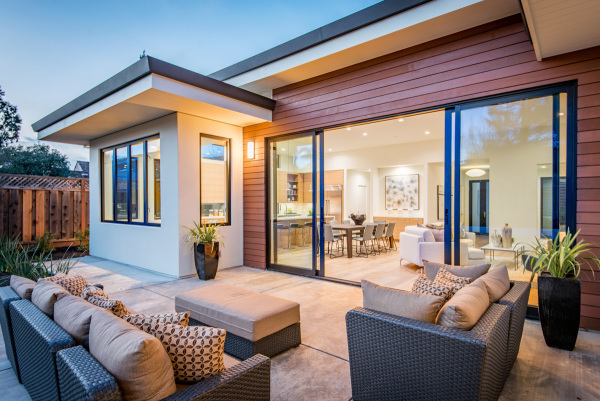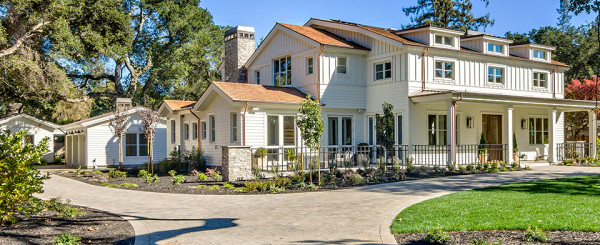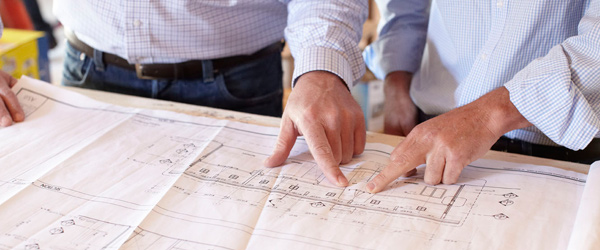These resources are from an archived version of our website. Want to see what we’ve been up to lately? Check out our new website.
LEED certification: A smart move for modern homeowners (pt.2)
In our last blog post, we discussed how LEED (Leadership in Energy and Environmental Design) certification can bring your home to the next level. Between improved indoor air quality, greater energy efficiency, and even increased owner satisfaction, attaining this accreditation makes sense for eco-conscious consumers.
In part two of this LEED blog series, we’ll dive into what you should anticipate during the certification process and hear from the experts how to best navigate the process.
The LEED certification process: What to expect
While LEED certification involves rigorous requirements, the process can be whittled down into streamlined steps. The United States Green Building Council (USGBC), who founded LEED, defines four main stages of the process.

1. Register
As a very first step, USGBC recommends ensuring that your project has the minimum requirements applicable for LEED certification (see more of these specifications on their website).
Once you complete this preliminary step, you can utilize the LEED Online portal – a useful resource to track all your elements throughout the process. Through this portal, you can submit your application, take advantage of informational resources, submit payment, sign a certification agreement, and more.
2. Verify
Project management is key to making sure your project is on track – and thankfully, USGBC provides you resources to do so effectively. To make sure you’re successfully achieving the benchmarks necessary for certification, you will need to participate in various on-site performance testing.
One of your best allies throughout the certification process is your LEED Verification Team, who will help arrange all the required on-site verifications. Oftentimes, these experts have worked on hundreds of LEED for Homes projects and can help you to understand the best ways to incorporate the rating system requirements throughout your project.
3. Review
After working with your Verification Team to ensure requirements are met, your project will go through a standard review. In this step, your team submits the entire application of your project, including all credits and prerequisites.
Remember that your team is required to submit your project for review no later than two years after your project receives a certificate of occupancy (or a similar official indication). If your timeline is too tight, you can pay for an expedited review, which will cut the review time in half – read more on USGBC’s website.
4. Certify
At the end of your review period, GBCI (Green Business Certification Inc.) will determine your LEED rating and send you a final certification report. At this point, your project team can choose to accept or appeal the final certification report.
If you achieve certification – congratulations! USGBC provides a handy public relations guide for LEED-certified projects, a formal certificate of recognition, and the option to order LEED plaques and certificates. Don’t forget: LEED certification is a true cause for celebration!
Advice from the experts: How to set yourself up for success

At Clarum, we partner with clients to improve construction through the use of sustainable technologies, materials, and systems. As mentioned in our previous blog installment on LEED certification, we are an official member of USGBC and build LEED-certified homes, such as our LEED gold-rated Modern Farmhouse in Atherton, CA.
Because we have been through the process of LEED certification, we can offer some words of advice for those striving for accreditation. Of course, different needs will arise depending on your project – but it’s important to remember these high-level provisions.
- Plan early: Being proactive is key to obtaining LEED certification: it is common for inexperienced teams to strive for LEED goals too late in the design process. By deciding to pursue certification in pre-design, you can more easily set yourself up for success.
- Identify a qualified homebuilder: Don’t underestimate the importance of hiring LEED-accredited professionals. By having an experienced team, you’ll be better informed all throughout the application process (including how to be wise with your finances).
- Clearly communicate priorities: Get custom and creative on your path to LEED certification. Be sure to discuss early on which earth-friendly components are most important to you in your home. The earlier you have this conversation, the more feasible it will be to incorporate into your LEED plans.
- Stay up-to-date with the LEED landscape: Read through the USGBC website to get up-to-date information about requirements, processes, and more. Some USGBC chapters even offer newsletters delivered right to your inbox.
- Understand timelines and set targets: Talk to your builder to understand the timeline for LEED certification – from there, you can set deadlines and create your plan accordingly. Consider adding a stretch goal in case you need more room for creativity. Plus, it’s a good idea to make sure you integrate the LEED certification timeline with your overall building timeline.
- Designate a clear and adequate budget: Set a budget in accordance with the LEED certification level and timeline you’re aiming for. The higher the level and the shorter the timeline, the bigger your budget should likely be.
Planning for a worthy endeavor

Planning for LEED certification takes time, thoughtfulness, and dedication. With the right resources – especially a LEED-qualified homebuilder – you can create a beautiful home and a better tomorrow.
To learn more about building a LEED custom home with that’s healthy for you and your family, call Clarum at 650.322.7069.








